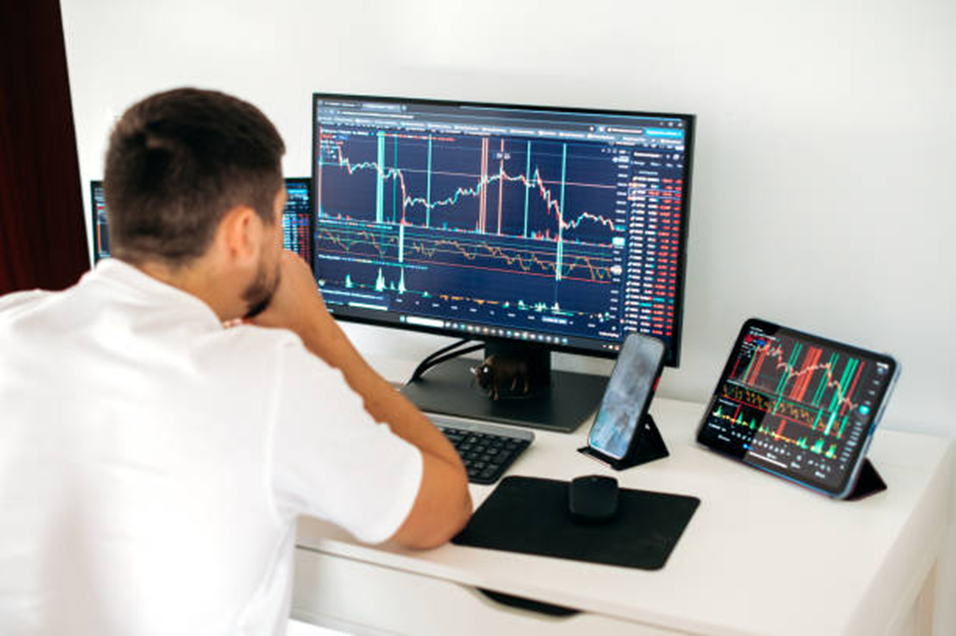Currency trading, also known as forex trading, offers one of the most accessible entry points into financial markets. With $7.5 trillion in daily trading volume, the forex market is the largest and most liquid financial market in the world. When you learn currency trading, you’re gaining skills to potentially profit from exchange rate movements between global currencies. The best part? You can start with modest capital and trade from anywhere with an internet connection.
Why Learn Currency Trading in 2025
The decision to learn currency trading makes particular sense in 2025. Global economic shifts, artificial intelligence integration into trading platforms, and increased market volatility create abundant opportunities for informed traders. Currency markets operate 24 hours a day, five days a week, allowing you to trade around your schedule rather than being limited to stock market hours.
Currency trading is accessible. Many brokers allow you to start with just $100-$500, though $1,000-$2,000 gives you more flexibility. You trade currency pairs like EUR/USD (euro versus U.S. dollar) or GBP/JPY (British pound versus Japanese yen), speculating whether one currency will strengthen or weaken against another.
Why currency trading appeals to beginners:
- 24-hour market fits any schedule
- High liquidity ensures easy entry and exit
- Start with modest capital compared to other markets
- Leverage allows controlling larger positions (use carefully)
- Educational resources widely available
When you learn currency trading properly, you develop skills applicable across all financial markets while accessing unique opportunities that currency markets specifically provide.
Understanding Currency Pairs and How They Work
Currency trading always involves pairs because you’re simultaneously buying one currency while selling another. If you think the euro will strengthen against the dollar, you buy EUR/USD. If you’re right and EUR/USD rises from 1.0500 to 1.0600, you profit. If it falls, you experience a loss.
Major currency pairs include EUR/USD, USD/JPY, GBP/USD, and USD/CHF. These pairs involve the U.S. dollar and offer the tightest spreads (difference between buying and selling prices) and highest liquidity. As you learn currency trading, focus on majors first. They’re easier to analyze and less volatile than exotic pairs.
Currency prices move in pips, the smallest price increment. For most pairs, one pip equals 0.0001. If EUR/USD moves from 1.0500 to 1.0525, it moves 25 pips. Understanding pips helps you calculate potential profits and losses and set appropriate risk parameters.
Essential currency pair concepts:
- Base currency (first listed) vs quote currency (second listed)
- Major pairs offer best liquidity and tightest spreads
- Pip movements determine profit and loss amounts
- Lot sizes determine position value (standard, mini, micro lots)
When you learn currency trading fundamentals, these concepts become second nature quickly. Start with a demo account to practice without risking real capital.
Setting Up Your Trading Foundation
Before placing your first trade, establish a solid foundation. Choose a reputable broker offering regulatory protection, competitive spreads, reliable execution, and quality educational resources. Research broker reviews, check regulatory status, and compare fee structures. Many brokers offer demo accounts with virtual money, perfect for practicing as you learn currency trading basics.
Develop a trading plan before risking capital. Define your goals, risk tolerance, preferred currency pairs, and trading timeframe. Will you day trade, scalping small moves throughout the day? Or swing trade, holding positions for days or weeks? Your plan guides decisions and prevents emotional trading.
Technical Analysis: Reading Price Charts
As you learn currency trading, technical analysis becomes an essential skill. This involves studying price charts to identify patterns, trends, and potential turning points. Currency traders rely heavily on technical analysis because currencies often respond to technical levels more cleanly than stocks.
Start with candlestick charts showing open, high, low, and close prices for each time period. Learn to identify common patterns like double tops, head and shoulders, and triangles. These patterns signal potential trend continuations or reversals.
Master key technical indicators. Moving averages smooth price action and identify trends. The Relative Strength Index (RSI) indicates overbought or oversold conditions. MACD shows momentum and potential trend changes. Support and resistance levels mark price zones where buying or selling pressure historically emerged.
Core technical analysis tools:
- Candlestick patterns for price action reading
- Moving averages for trend identification
- RSI and MACD for momentum assessment
- Support and resistance for entry and exit points
- Trendlines and channels for directional bias
The beauty of technical analysis is its universal application. Once you learn currency trading using these tools, you can apply them to stocks, commodities, or cryptocurrencies.
Fundamental Analysis: Understanding What Moves Currencies
While technical analysis tells you where price might go, fundamental analysis explains why currencies move. Economic data releases, central bank policies, and geopolitical events drive currency values. As you learn currency trading, understanding these fundamentals helps you anticipate major moves.
Interest rates powerfully influence currency values. When a central bank raises rates, that currency often strengthens as higher rates attract foreign investment. Economic indicators like GDP growth, employment data, and inflation reports affect central bank decisions and currency trends.
Monitor economic calendars showing scheduled data releases. High-impact events like Federal Reserve announcements or employment reports can move currency pairs hundreds of pips in minutes. Many traders avoid holding positions during major announcements or prepare strategies specifically for these events.
Key fundamental factors:
- Central bank interest rate decisions and policy statements
- Employment reports and GDP growth figures
- Inflation data influencing monetary policy
- Political stability and geopolitical events
- Trade balances and current account data
Combining technical and fundamental analysis creates a comprehensive approach. Technical analysis provides entry and exit timing while fundamental analysis confirms directional bias.
Risk Management: Protecting Your Capital
The most critical skill as you learn currency trading is risk management. Successful traders preserve capital during inevitable losing streaks, allowing them to profit when good opportunities arise. The rule is simple: protect your downside, and the upside takes care of itself.
Stop losses are mandatory. Before entering any trade, determine where you’ll exit if wrong and place a stop loss at that level. This removes emotion from losing trades. You predetermine acceptable loss, execute your trade, and let the market decide. Successful traders treat stop losses as insurance, accepting small planned losses to prevent catastrophic unplanned ones.
Risk management essentials:
- Risk only 1-2% of capital per trade
- Always use stop losses on every position
- Calculate position size based on stop distance
- Maintain risk-reward ratio of at least 1:2 (risk $1 to potentially gain $2)
- Keep detailed trading journal tracking all trades
As you learn currency trading, these risk management principles become automatic habits that protect you through all market conditions.
Starting Your Currency Trading Journey
Begin with education. Read books on currency trading, take online courses, watch video tutorials, and follow experienced traders. Spend at least a month studying before risking real money. Knowledge invested upfront pays dividends throughout your trading career.
Practice extensively on demo accounts. Paper trading eliminates financial pressure while you develop skills. Test your strategies, refine your approach, and build confidence. Only transition to real money after consistently profitable demo trading for at least three months.
Currency trading offers genuine opportunities for those willing to invest time learning properly. The market rewards preparation, discipline, and patience. Start your education today, practice diligently, and approach live trading systematically. When you learn currency trading the right way, you develop skills that can serve you for decades.

















